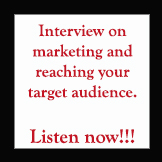As I thought about this topic, I didn't know whether to credit the news ticker on Times Square in New York or Thomas Edison's original stock ticker machine as the first form of digital advertising. However, one of those two would likely be able to take the credit.
However, to get serious for a moment, modern digital advertising started in the 1980s. It did not look anything like it does today. My first recollection of digital advertising was a service the Wall Street Journal offered whereby you called a toll free number to hear stock reports. Interspersed with the reports they had short ten second commercials. I would call that the first digital advertising, even though it was audio. It wasn't print and it wasn't broadcast.
Back on 11 Dec 1996, the Internet Advertising Bureau (IAB) reported that internet advertising revenue reached USD 157 million through the third quarter of 1996. This appears to be the first report of internet, or digital, advertising results in the current era.
Jumping to current times, IAB reported the internet ad spending in the first quarter of 2015 reached USD 13.3 billion. On 30 Jul 2015, CNBC reported that digital advertising is projected to be the largest category of advertising spending in 2016 for the first time. The report goes on to say print was first as recently as 2007, falling to second to television in 2009 (they were essentially tied in 2008). Digital has been on a clear and straight path upward since 2007.
Of course, this includes retail as well as B2B (business-to-business) advertising. Here we are interested in B2B only, yet what happens in retail is important to us, because a person's perceptions and viewing habits are composed of their entire experience base, not just their B2B experience.
What we see in venues that would likely be categorized as B2B growth contains a lot of confusion. Spewing out emails, scattered attempts at linking with potential customers on sites such as LinkedIn, these are likely attempts that would be captured in B2B growth.
What one needs though to drive business to their bottom line is indeed growth, but it needs to be planned out, strategic growth.
Many people, especially people who run small companies, link up with me on LinkedIn and then send me an email about their services or products. They have no idea if I now need, will need or will ever need their offerings. Further, they have given me no motivating reason to spread the news about their offerings to others. This is digital advertising and marketing but it is lousy digital advertising and marketing.
To be effective and grow both your marketing and your business (the obvious ultimate goal), the old principles still apply. You must build your brand, your brand must be presented to audiences that will find it attractive and you must stick with it for a very long time.
Here at Paperitalo Publications, we have had patience in excess in building our own brands of media. It has paid off. It is a branding franchise which can help you build your brand by advertising with us.
Again, however, you also must have attractive offerings (products or services) for the audience in front of which you are placing yourself.
Let's take a look at one small piece of the digital advertising market that Paperitalo Publications is working diligently to build. Let's take a look at Pulp & Paper Radio International (
www.pnpri.com). We started P & PRI in the spring of 2012. No one had ever tried anything like this before in our B2B space-the pulp and paper industry. In 2012, our programs were listened to 9,000 times. We were experimenting with formats, timing, everything. In 2013 we had almost 20,000 listens. Last year, we had 54,000 listens. And, now, in 2015, we are on track to have 80,000 listens this year. That's digital growth-a nearly nine fold increase in less than 48 months!
Of course, web, email and other digital media continues to grow, too. We are on top of that as well. The key is to brand, be attractive to the audience and be consistently repetitive. All these principles take discipline to execute and patience for results. However, if you don't start, you'll never complete the journey.
Jim Thompson is CEO and Executive Editor of Paperitalo Publications.For more information on Paperitalo Publications, feel free to contact:
Curt Gifford
cgifford@taii.com
770-367-4823
Helen Roush
helen.roush@taii.com
937-403-8602
Jim Thompson
jthompson@taii.com
678-206-6010
